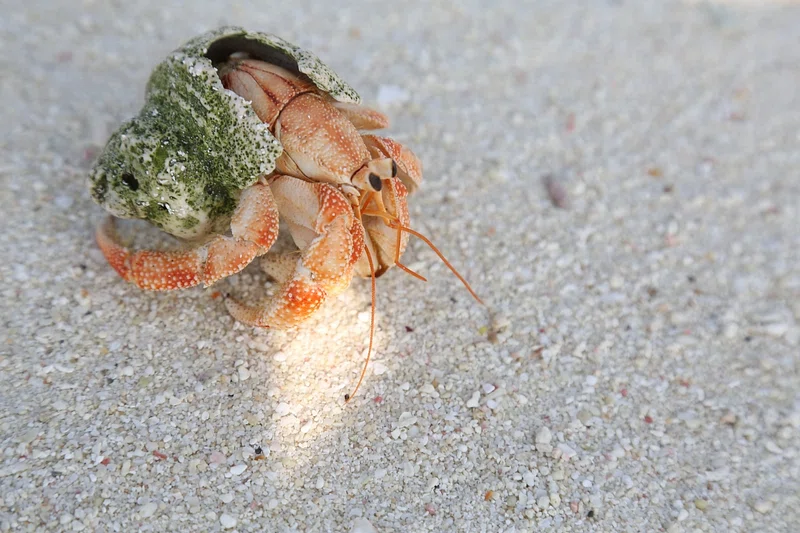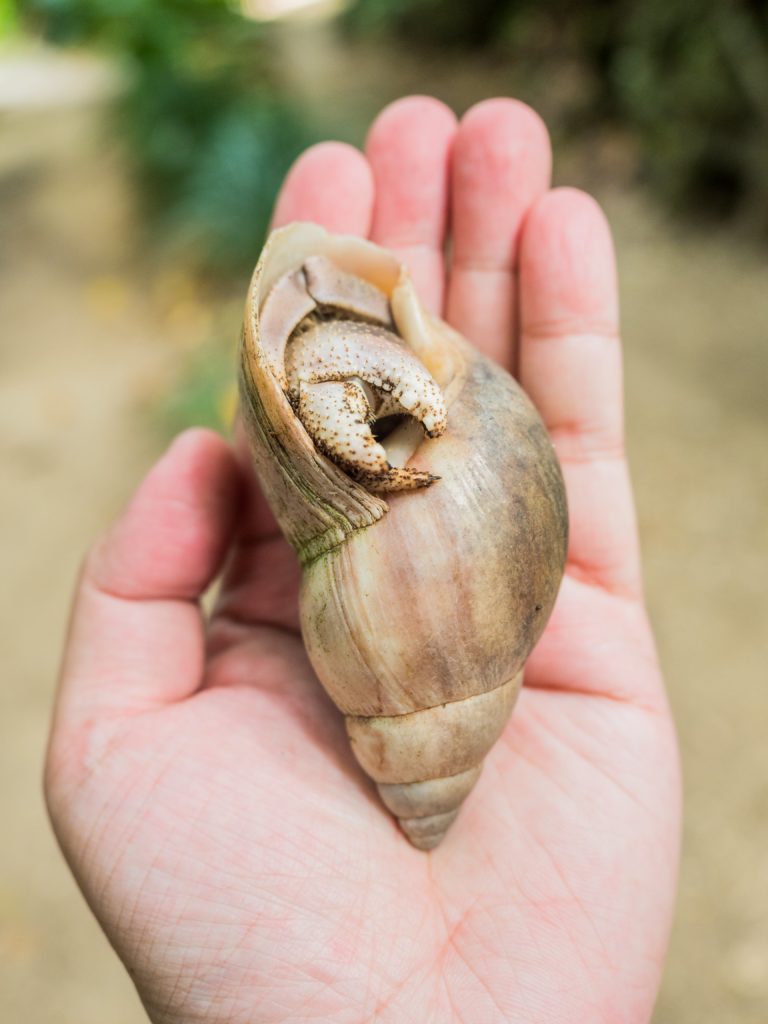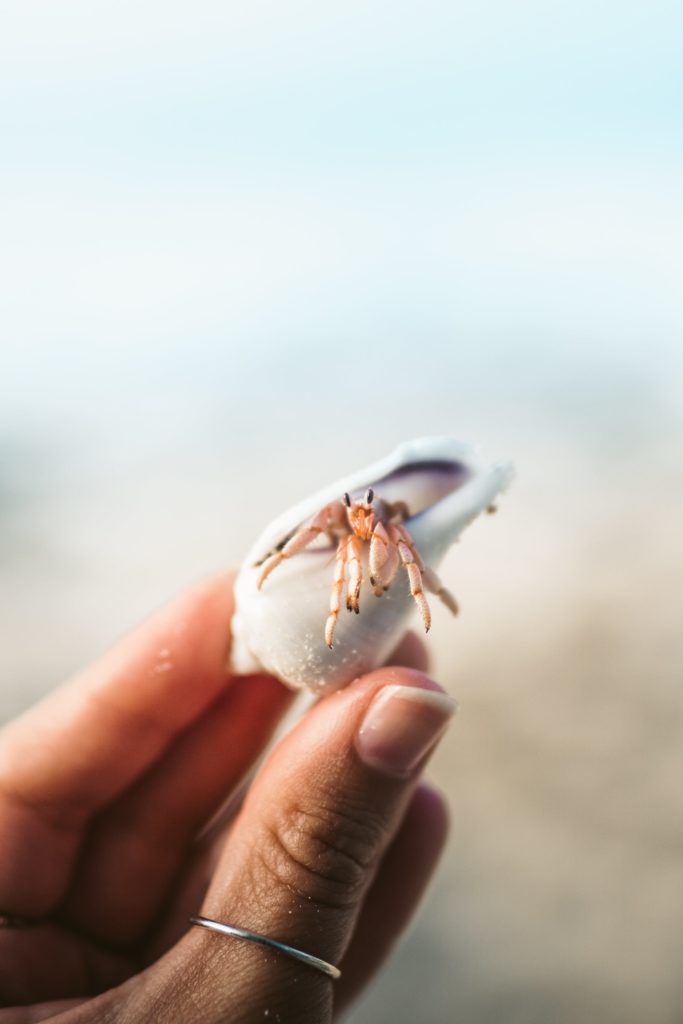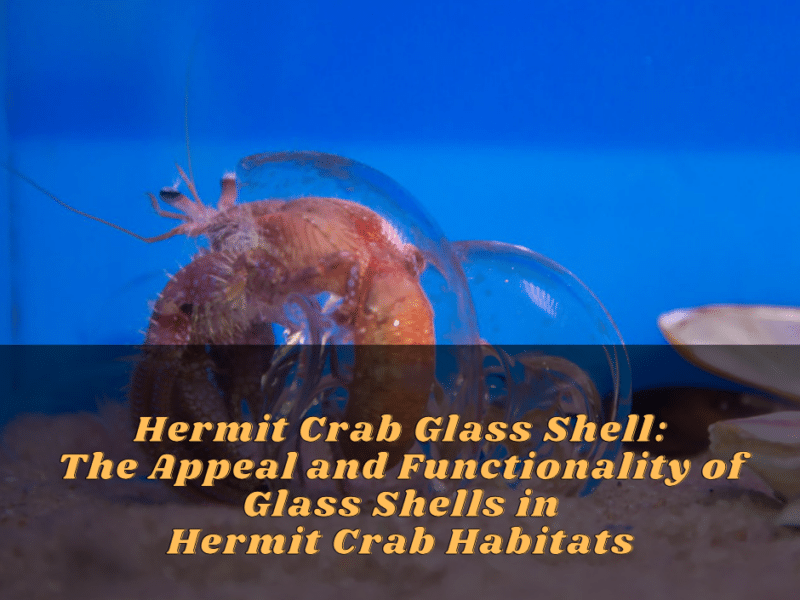Introduction to How to Find Hermit Crabs
Importance of finding hermit crabs in their environment
Finding hermit crabs in their natural environment is crucial for understanding their behavior and preferences. It allows researchers and enthusiasts to gain insights into their habitat requirements, including the types of shells they prefer. By studying their shell selection process, we can learn about their adaptation mechanisms and better care for them in captivity. This knowledge also helps in conservation efforts to protect their natural habitats.
Challenges in locating hermit crabs
Locating hermit crabs can sometimes be challenging due to their elusive nature and the diversity of habitats they occupy. Here are a few challenges faced when studying hermit crabs:
- Camouflage: Hermit crabs have excellent camouflage abilities, making it difficult to spot them in their natural surroundings.
- Nocturnal behavior: Many hermit crab species are nocturnal, meaning they are most active during the night. This makes it harder to observe their behaviors during the day.
- Shallow water or intertidal zones: Some hermit crabs inhabit shallow waters or intertidal zones, where they burrow in sand or hide among rocks. These habitats can be hard to access and navigate.
- Varying shell preferences: Different hermit crab species have specific shell preferences in terms of size, shape, and material. Identifying the right shells that attract them can be challenging, especially when they have various options available.
Despite these challenges, researchers and enthusiasts employ various methods to locate hermit crabs in their natural habitat. One common approach is to conduct underwater surveys using snorkeling or diving equipment. This allows for direct observations and documentation of their behavior. Another method is to set up traps or baited structures to attract and catch hermit crabs for study.
By overcoming these challenges, researchers can gather valuable information about hermit crabs and their shell selection process, contributing to our understanding of these fascinating creatures.
Understanding Hermit Crabs’ Natural Habitat
Characteristics of a hermit crab habitat
- Coastal Areas: Hermit crabs are commonly found in coastal regions, including beaches, estuaries, and rocky shorelines. These areas provide a variety of shells, food sources, and suitable living conditions for hermit crabs.
- Shallow Waters: Many hermit crab species prefer shallow waters, such as intertidal zones and tide pools, where they can easily access food and find suitable shells. These areas are also rich in algae and other marine life, which serve as important food sources.
- Diverse Bottom Substrate: Hermit crabs are often found in habitats with diverse bottom substrates like sand, mud, or gravel. This allows them to dig burrows and find shelter.
- Presence of Vegetation: Vegetation in the form of seagrass beds or mangroves provides cover and a source of food for hermit crabs. These areas are typically teeming with insects and other invertebrates that hermit crabs feed on.
Identifying optimal locations to find hermit crabs
- Observation: Look for signs of hermit crabs, such as empty shells, tracks, or discarded exoskeletons, which indicate their presence. Also, keep an eye out for active individuals during low tide when they may be exploring or searching for new shells.
- Rocky areas: Check areas with rocks, crevices, and tide pools as hermit crabs often seek shelter and hunt for food in these locations.
- Seagrass beds: Look for hermit crabs near seagrass beds where they can find abundant food sources and protective cover.
- Underwater surveys: Conduct underwater surveys using snorkeling or diving equipment to directly observe and document hermit crab behavior. This allows for a more accurate understanding of their preferred habitats and behaviors.
- Baited structures: Set up traps or baited structures, such as baited pots or cages, to attract and catch hermit crabs for study. This method can provide valuable insights into their behavior and habitat preferences.
By understanding the characteristics of a hermit crab’s natural habitat and employing suitable methods to locate them, researchers and enthusiasts can gather valuable information about these fascinating creatures and contribute to their conservation and well-being.
Observing Hermit Crabs from a Distance
Benefits of observing hermit crabs in their natural habitat
- Behavioral insights: Observing hermit crabs in their natural habitat provides valuable information about their behavior, such as feeding habits, shell selection, and interactions with other individuals. This knowledge can contribute to a better understanding of their ecological role and adaptation strategies.
- Habitat preferences: By closely observing hermit crabs, researchers can identify specific habitat requirements, including temperature, substrate type, and vegetation cover. This information is crucial for effective conservation and management efforts.
- Ecosystem dynamics: Hermit crabs play a significant role in the dynamics of coastal ecosystems. Studying their behavior can help researchers understand the ecological relationships between hermit crabs and other organisms, such as gastropods and algae.
Tips for observing hermit crabs without disturbing them
- Maintain a safe distance: Approach hermit crabs slowly and quietly to avoid startling them. Keep a safe distance to prevent interfering with their natural behavior.
- Use binoculars or camera lenses: To get a closer look at hermit crabs without disturbing them, use binoculars or camera lenses with zoom capabilities. This allows for detailed observations without getting too close.
- Observe during low tide: During low tide, hermit crabs are more likely to be active and visible. Choose this time to observe their behavior and interactions in the natural environment.
- Avoid direct handling: Touching or handling hermit crabs can harm or stress them. It is best to admire them from a distance and let them continue their activities undisturbed.
- Keep noise levels low: Loud noises and sudden movements can startle hermit crabs and disrupt their natural behavior. Maintain a quiet and calm environment to allow for uninterrupted observation.
By observing hermit crabs in their natural habitat while respecting their space, researchers and nature enthusiasts can gain valuable insights into their behavior and contribute to their conservation efforts. Taking the time to understand these fascinating creatures can lead to a deeper appreciation for their role in coastal ecosystems.
Timing your Search
Time of day that offers the best chance for spotting hermit crabs
Observing hermit crabs in their natural habitat can be an exciting and rewarding experience. To maximize your chances of spotting these fascinating creatures, it is important to know the best time of day to search for them. Here are some tips:
- Early morning and late afternoon: Hermit crabs are generally more active during these times. The cooler temperatures and lower light levels make it more comfortable for them to venture out of their shells and explore their surroundings.
- Low tide periods: During low tide, hermit crabs have access to a larger area to search for food and mates. They are more likely to be visible and active during these times. Research local tide charts to determine the best timing for your search.
Seasonal patterns and their impact on hermit crab activity
The activity patterns of hermit crabs can also be influenced by seasonal changes. Understanding these patterns can help you plan your observations more effectively. Here are a few seasonal considerations:
- Spring and summer: During the warmer months, hermit crabs are generally more active and visible. The increased temperatures and longer daylight hours stimulate their metabolism and encourage activity.
- Fall and winter: As temperatures drop and daylight hours decrease, hermit crabs tend to become less active. They may spend more time in their shells and retreat to deeper waters. However, this can vary depending on the specific habitat and geographical location.
It is important to note that these are general guidelines, and individual hermit crab behavior can vary. Factors such as local climate, habitat conditions, and food availability can also influence their activity patterns. By being aware of these timing considerations, you can increase your chances of observing hermit crabs in their natural environment. Remember to respect their space and observe from a distance to minimize disturbance.
Approaching Hermit Crab Habitats
Techniques for Approaching Hermit Crab Habitats Without Scaring Them Away
When it comes to approaching hermit crab habitats, it’s important to be mindful of their sensitive nature and take steps to minimize any potential disturbances. Here are some techniques you can employ:
- Move Slowly and Quietly: Hermit crabs are easily startled by sudden movements and loud noises. Approach their habitat with slow, deliberate steps and keep your voice low to avoid scaring them away.
- Stay Low: Crouch down or kneel to the ground when observing hermit crabs. By positioning yourself at their eye level, you appear less intimidating and are less likely to cause them to retreat into their shells.
- Use Natural Camouflage: Dressing in neutral colors that blend in with the surroundings can help you blend in and not appear as a threat to the hermit crabs. Avoid wearing bright or contrasting colors that may startle them.
- Observe from a Distance: It’s important to give hermit crabs their space and observe them from a distance. Using binoculars or a camera with a zoom lens can allow you to get a closer look without disturbing them.
Tools and Equipment That Can Aid in Finding Hermit Crabs
Finding hermit crabs in their natural habitats can sometimes be challenging, but the right tools and equipment can greatly increase your chances of spotting them. Here are a few helpful items:
- Flashlight: A small flashlight with a red filter can be useful for nocturnal observations. Hermit crabs are more active at night, and the red light will not disturb their natural behavior.
- Magnifying Glass: A magnifying glass can help you get a closer look at the intricate details of hermit crabs, such as their shells and appendages. It allows for a better understanding of their physiology and behavior.
- Field Guide: A field guide specific to hermit crabs can provide valuable information about the species found in your area. It can help you identify different species and understand their natural history.
- Tide Chart: Knowing the timings of high and low tide in your area can be essential for finding hermit crabs. Low tide periods offer a larger area for exploration and increase the likelihood of spotting them.
By employing these techniques and utilizing the right tools, you can enhance your experience of observing hermit crabs in their natural habitat. Remember to prioritize their well-being and avoid disturbing them during your observations.
Searching for Hermit Crabs in Tide Pools
Exploring the role of tide pools in attracting hermit crabs
Tide pools play an important role in providing a suitable habitat for hermit crabs. These small pools of water are formed when the tide recedes, leaving behind calm and shallow areas along the rocky coastline. Here, hermit crabs can find shelter, food, and other resources necessary for their survival. The unique characteristics of tide pools, such as the presence of rocks and seaweed, make them ideal environments for these fascinating crustaceans.
Strategies for finding hermit crabs in tide pool environments
If you’re interested in observing hermit crabs in their natural habitat, tide pools are a great place to start. Here are some strategies to help you find these elusive creatures:
- Choose the right time: Timing is crucial when searching for hermit crabs in tide pools. Low tide periods are when the sea retreats, revealing a larger area of the tide pool. This gives you a better chance of spotting hermit crabs as they explore the exposed areas.
- Be patient and observant: Once you’ve found a tide pool, take your time to carefully scan the area. Look for movement, as hermit crabs are known for their scuttling behavior. Pay attention to rocks, seaweed, and other debris where they may be hiding.
- Use a net or container: If you spot a hermit crab, you can gently scoop it up using a net or a container filled with water from the tide pool. Make sure to handle them with care and release them back into the pool after observing them.
- Bring a magnifying glass: A magnifying glass can help you get a closer look at the intricate details of hermit crabs, such as their shells and appendages. It allows for a better understanding of their physiology and behavior.
By following these strategies, you can increase your chances of finding hermit crabs in tide pools and gain a deeper appreciation for these unique creatures and their fascinating natural habitat.
Examining Potential Shelter Spots
Identifying Common Areas Where Hermit Crabs Hide
When exploring tide pools in search of hermit crabs, it is essential to know where to look for these elusive creatures. Here are some common areas where hermit crabs typically hide:
- Under rocks: Hermit crabs often seek shelter under rocks, which provide protection from predators and a secure hiding spot.
- Amidst seaweed: Seaweed provides an excellent camouflage for hermit crabs, making it harder to spot them. Look closely among seaweed patches for any movement.
- Within crevices: Tide pool rocks often have crevices and small gaps where hermit crabs can squeeze in. These narrow spaces offer ideal hiding spots for these crustaceans.
- Beneath shells: Hermit crabs have a fascinating habit of using discarded shells as their shelter. Look for shells that are slightly agitated or moving, indicating the presence of a hermit crab inside.
Techniques for Lifting Stones and Other Debris to Locate Hermit Crabs
Once you’ve identified potential hiding spots, it’s essential to employ techniques that allow you to lift stones and other debris without causing harm to the hermit crabs or their delicate habitat. Follow these techniques:
- Use your hands: Utilize your hands to gently lift small rocks, paying close attention to any hermit crabs that may be underneath. Take care not to disturb the surrounding area.
- Use a small tool: If the rocks are too heavy to lift by hand or situated in hard-to-reach areas, consider using a small tool like a trowel or a plastic shovel to carefully lift them.
Remember, the goal is to observe hermit crabs in their natural habitat without causing any harm. Always treat the tide pool environment with respect and ensure that you return any rocks and debris to their original positions after inspecting them.
Tracking Hermit Crab Movement
Understanding the behavior and movement patterns of hermit crabs
Tracking the movement of hermit crabs can provide valuable insights into their behavior and habitat preferences. Here are some key points to understand about their movement patterns:
- Directional movement: Hermit crabs tend to move in a particular direction, either in search of food or to explore new territories. They often follow the shoreline or move towards areas with plentiful food sources.
- Intermittent movement: Hermit crabs don’t continuously move but rather engage in periods of activity followed by rest. This behavior allows them to conserve energy and minimize exposure to potential threats.
- Exploration behavior: Hermit crabs are curious creatures and display exploratory behavior, especially when searching for food. They can cover a significant distance within their habitat in search of suitable feeding grounds.
- Social interactions: Hermit crabs may form temporary groups or gather in certain areas during mating seasons or other specific events. Understanding these social dynamics can provide further insights into their movement patterns.
Following trails and signs to find hermit crabs
Tracking hermit crabs can be challenging, but following the trails and signs they leave behind can greatly increase your chances of finding them. Here are some techniques to consider:
- Footprints in sand: Look for distinctive tracks or footprints left by hermit crabs on sandy substrates. These tracks can indicate recent movement and can guide you towards their hiding spots.
- Crab burrows: Hermit crabs often dig burrows in the sand or soft soil, which serve as their oases of safety. Look for small openings or disturbances in the ground that could indicate the presence of a hermit crab.
- Feeding remnants: Keep an eye out for leftover food or feeding remnants near potential hiding spots. Hermit crabs sometimes leave traces of their feeding activities, such as discarded shells or small pieces of food.
- Observing other creatures: Look for cues from other animals or organisms that may interact with hermit crabs. Birds, fish, and other marine creatures often show interest in hermit crab habitats, giving you hints about their presence.
By understanding the behavior and movement patterns of hermit crabs and following the trails and signs they leave behind, you can enhance your ability to locate and observe these fascinating creatures in their natural habitat.
Conclusion
Tips for a successful hermit crab search
When searching for hermit crabs in their natural habitat, it’s important to keep these tips in mind:
- Find a rocky beach: Hermit crabs thrive in rocky habitats where they can seek shelter when the tide goes out.
- Wait for low tide: During low tide, parts of the ocean become accessible, making it easier to find hermit crabs.
- Use the right techniques: Look for footprints, crab burrows, feeding remnants, and observe other creatures to increase your chances of spotting hermit crabs.
Appreciating the beauty of observing hermit crabs in their natural habitat
Observing hermit crabs in their natural habitat can be a rewarding experience. It allows us to witness their unique behavior, movement patterns, and social interactions. By taking the time to understand their behavior and following the signs they leave behind, we can appreciate the beauty of these fascinating creatures and learn more about their lives in the oceanic ecosystem.
Frequently Asked Questions: How to Find Hermit Crabs
Q: What are some strategies for locating hermit crabs in their environment?
A: Locating hermit crabs in their natural habitat can sometimes be a challenging task, but with the right strategies, it becomes easier. Here are a few tips to help you find hermit crabs:
Q: Is it possible to find hermit crabs by searching during a specific time of day?
A: While hermit crabs are generally more active during the night, they can also be found during the daytime, especially in areas with adequate shade and moisture. Exploring different times of the day will increase your chances of spotting them.
Q: What are the key locations to search for hermit crabs?
A: Hermit crabs inhabit various environments such as sandy beaches, rocky shores, forests, mangroves, and even freshwater habitats. When searching for hermit crabs, keep an eye out for these areas as they are more likely to have a higher population.
Q: What are some visual cues that can help in finding hermit crabs?
A: Look for small holes in the sand or mud, empty seashells scattered around, or tracks leading to the water’s edge. These are signs that hermit crabs might be nearby. Additionally, observing small movements in the sand or among rocks can indicate their presence.
Q: Are there any specific tide conditions that can improve the chances of locating hermit crabs?
A: Generally, low tides are the best time to search for hermit crabs as it exposes more of their habitat. During low tide, the water recedes, revealing the areas where hermit crabs might be hiding. Plan your search accordingly by checking local tide charts.
Q: What about using bait to attract hermit crabs?
A: Bait can be an effective tool to attract hermit crabs. You can try using small pieces of fish, shrimp, or even fruit as bait. Place the bait near the areas where you think hermit crabs might be hiding, and wait patiently for them to get lured in.
Q: Are there any precautions to keep in mind while searching for hermit crabs?
A: It’s important to respect the hermit crabs and their habitat while searching for them. Avoid causing any harm or disturbance to the ecosystem. Also, be cautious about your footsteps to avoid accidentally stepping on or harming any hermit crabs.
Q: Can I keep a hermit crab that I found in the wild as a pet?
A: While finding hermit crabs to keep as pets may seem tempting, it’s best to avoid taking them from their natural habitat. It’s important to let them thrive and contribute to the ecosystem they belong to. Instead, consider adopting a hermit crab from a reputable source as a pet.
Remember, while finding hermit crabs in their environment can be an exciting adventure, it’s essential to be mindful of their natural habitat and ensure their well-being. Happy crab hunting!





